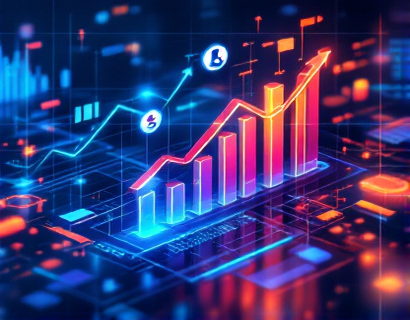Real-Time Analytics for Digital Asset Investors: Mastering Market Insights with Advanced Data Insights
In the fast-paced world of digital finance, staying ahead requires more than just a keen understanding of market trends. It demands access to real-time data and advanced analytics tools that can transform raw information into actionable insights. For digital asset investors, the ability to monitor and analyze market movements instantly can mean the difference between profit and loss. This article delves into the critical role of real-time analytics in empowering investors to make informed decisions and navigate the complexities of the digital asset market with confidence.
Understanding Real-Time Analytics
Real-time analytics refers to the process of capturing, processing, and analyzing data as it occurs, providing immediate insights into market conditions. In the context of digital assets, this means tracking price fluctuations, trading volumes, and other key performance indicators in real-time. Unlike traditional methods that rely on delayed data, real-time analytics offers a dynamic view of the market, enabling investors to react swiftly to changes.
The Importance of Real-Time Data for Digital Asset Investors
The digital asset market is notoriously volatile, with prices fluctuating rapidly based on a multitude of factors including news, regulatory changes, and market sentiment. Real-time data is crucial because it allows investors to monitor these changes as they happen, reducing the risk of missing out on critical opportunities or incurring unnecessary losses. With real-time analytics, investors can track the performance of their portfolios continuously, adjust their strategies on the fly, and capitalize on emerging trends.
Key Performance Metrics in Real-Time Analytics
To effectively leverage real-time analytics, investors need access to a comprehensive set of performance metrics. These metrics provide a holistic view of market conditions and asset performance. Key metrics include:
- Price: The current market price of a digital asset, updated in real-time.
- Trading Volume: The total number of units traded during a specific period, indicating market activity.
- Market Cap: The total market value of a digital asset, calculated by multiplying the current price by the total circulating supply.
- Change Percentage: The percentage change in price over a specified period, helping investors gauge short-term trends.
- High and Low Prices: The highest and lowest prices reached during a trading session, providing insight into price volatility.
- Order Book: A real-time display of buy and sell orders, helping investors understand market depth and potential price movements.
These metrics, when analyzed together, offer a comprehensive picture of the digital asset's performance and market dynamics, enabling investors to make more informed decisions.
Benefits of Real-Time Analytics for Investment Strategy
The integration of real-time analytics into an investment strategy offers numerous benefits. Firstly, it enhances decision-making by providing up-to-the-minute data, allowing investors to react quickly to market changes. This agility is particularly valuable in a market where conditions can shift rapidly. Secondly, real-time analytics helps in risk management by offering continuous monitoring of portfolio performance, enabling investors to identify and mitigate risks promptly. Additionally, it supports trend identification and pattern recognition, which are essential for long-term strategic planning.
For instance, an investor monitoring real-time data might notice a sudden spike in trading volume for a particular digital asset, indicating potential news or events affecting its price. With this insight, the investor can choose to buy more, sell off, or hold, based on their analysis and strategy. This level of responsiveness is unattainable with delayed data, underscoring the value of real-time analytics in digital asset investing.
Technological Infrastructure for Real-Time Analytics
Achieving real-time analytics requires a robust technological infrastructure capable of handling large volumes of data with minimal latency. This infrastructure typically includes high-performance servers, advanced data processing algorithms, and sophisticated data visualization tools. The system must be designed to ingest data from multiple sources, process it in real-time, and present it in an intuitive and actionable format.
Blockchain technology plays a pivotal role in this ecosystem, providing a transparent and immutable ledger of transactions that underpins the accuracy of real-time data. Additionally, machine learning algorithms can be employed to analyze historical data and predict future trends, further enhancing the analytical capabilities of the platform.
Challenges in Implementing Real-Time Analytics
While the benefits of real-time analytics are clear, implementing such a system comes with its own set of challenges. One of the primary challenges is data accuracy and reliability. Ensuring that the data is accurate and free from errors is crucial for making informed investment decisions. This requires rigorous data validation processes and robust error-checking mechanisms.
Another challenge is the sheer volume of data generated in real-time. Handling and processing this data efficiently without causing system bottlenecks is a significant technical hurdle. Scalability is key, as the system must be able to handle increasing data loads as the market grows. Furthermore, security is paramount, as sensitive financial data must be protected against cyber threats.
Best Practices for Utilizing Real-Time Analytics
To maximize the effectiveness of real-time analytics, investors should adopt several best practices. First, it's essential to define clear investment objectives and risk tolerance levels, as this will guide the interpretation of real-time data. Second, investors should develop a comprehensive monitoring dashboard that integrates all relevant metrics, providing a unified view of their investments. Third, automated alert systems can be set up to notify investors of significant changes or events, ensuring timely responses.
Continuous learning and adaptation are also crucial. The digital asset market is constantly evolving, and investors must stay informed about new tools, techniques, and market dynamics. Engaging with communities, following industry leaders, and participating in educational programs can help investors stay ahead of the curve.
Case Studies: Successful Implementation of Real-Time Analytics
Several notable examples illustrate the successful implementation of real-time analytics in digital asset investing. One such case involves a hedge fund that integrated real-time data feeds into their trading algorithms. By analyzing price movements, trading volumes, and order book data in real-time, the fund was able to execute high-frequency trades with precision, significantly improving their returns. Another example is a private equity firm that used real-time analytics to monitor the performance of its digital asset portfolio, enabling them to quickly rebalance their holdings in response to market shifts.
These case studies demonstrate that real-time analytics is not just a theoretical concept but a practical tool that can deliver tangible results. By leveraging real-time data, investors can gain a competitive edge, optimize their strategies, and achieve better outcomes.
Future Trends in Real-Time Analytics for Digital Assets
The future of real-time analytics in digital asset investing is promising, with several emerging trends set to enhance its capabilities. One such trend is the integration of artificial intelligence and machine learning, which can further refine predictive analytics and automate decision-making processes. AI-driven insights can help investors identify complex patterns and make more accurate forecasts.
Another trend is the increasing use of decentralized analytics platforms, which leverage blockchain technology to provide secure and transparent data sharing. These platforms can enhance data integrity and accessibility, benefiting the entire ecosystem. Additionally, the rise of Internet of Things (IoT) devices is expected to generate more granular and diverse data sources, enriching the analytical landscape.
As technology continues to advance, the real-time analytics landscape will become more sophisticated, offering even more powerful tools for digital asset investors. The key will be to stay informed and adapt to these changes, ensuring that investment strategies remain effective and resilient.
Conclusion
Real-time analytics is an indispensable tool for digital asset investors seeking to navigate the complex and dynamic market with confidence. By providing immediate insights into market conditions and asset performance, real-time analytics empowers investors to make informed decisions, manage risks effectively, and capitalize on emerging opportunities. While the implementation of such systems comes with challenges, the benefits far outweigh the costs. As the digital asset market continues to evolve, embracing real-time analytics will be essential for staying ahead and achieving long-term success.










































